MaryAnn Bernal's Blog, page 235
September 22, 2014
London archaeologists seek public’s help to restore Temple of Mithras
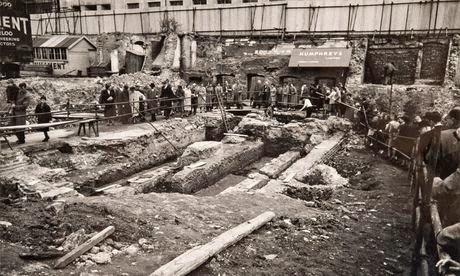 The Temple of Mithras excavation site in 1954. Photograph: Museum of London
The Temple of Mithras excavation site in 1954. Photograph: Museum of London Maev Kennedy
Experts hope to recover memories of site when it was first excavated 60 years ago to help reconstruct it accurately
Archaeologists working on an ancient Roman site in the centre of London are calling on members of the public to share their memories, memorabilia and photographs of the site when it was first excavated 60 years ago.
The Temple of Mithras was discovered on a Saturday afternoon in September 1954, in the last hour of a rather dull and muddy excavation on the site of a dull office block in the heart of the City of London.
In the drab postwar city, its glamour caught the public imagination and it became front-page and cinema documentary news. Police had to be called in to control the crowds, and after the furore over its proposed destruction was discussed at cabinet, the ruins were moved and haphazardly reconstructed on another part of the site.
Now Museum of London Archaeology(MoLA) experts are trying to recover as many memories of the site as possible, and hope to discover colour photographs or even paintings to help with the project to reconstruct it yet again, this time accurately and back on its original foundations.
Site records say the stones were originally joined with pink mortar, but apparently no samples were kept. They hope a visitor may have left with a souvenir piece of mortar in a pocket, and that it’s still out there in a cardboard box on top of a wardrobe.
Already a ticket has turned up that suggests some of the visiting public were allowed to help with the digging. A startling letter, evidently from the friend who secured it for the donor’s aunt, said: “One has to get a ticket from Humphreys of Knightsbridge. We did this and got one for you too because they say today is the last day! So do go along … We found bones and a tooth.”
Sophie Jackson, a MoLA archaeologist, found the ticket and letter fascinating. “Now we’re encouraged to have public engagement in every project, and if possible to involve them in a community dig – but we had no idea they were doing this 60 years ago.”
In 1954 the archaeologists were just clearing up the site before heading off to the pub and leaving it to the developers of an even duller office block when they uncovered the head of a smiling handsome young god, Mithras, looking up from the London clay.
The site was a stroll from the newspaper world of Fleet Street. A press photographer happened to be hanging around, and when his images were released, crowds flocked. By Monday, the imminent destruction of the site had become a political scandal.
Instead the stones were moved, and the temple built in honour of a Persian god particularly revered by Roman soldiers became bizarrely suburbanised, complete with a crazy-paving floor.
Now the site is being redeveloped again, and the temple will be incorporated into a new Bloomberg building. It should be on view to the public again by 2017. The surprise for the archaeologists was how much remained at the original location in Roman times on the banks of the Walbrook stream. They assumed every trace had been bulldozed for the 1954 block, but found extensive foundations and a pickaxe left behind by their predecessors.
theguardian

Published on September 22, 2014 12:19
Sunken 'Ship of Gold' Contains Bounty of Jewelry, Treasures
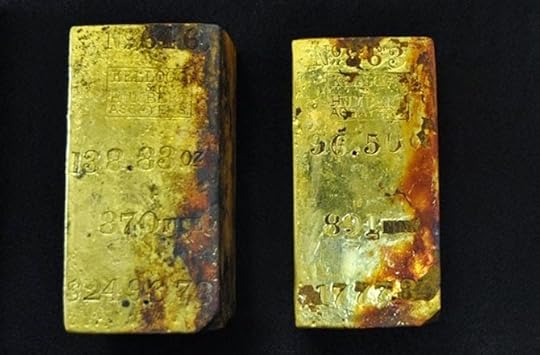 In April 2014, gold bars were recovered from a reconnaissance dive to the SS Central America shipwreck.
In April 2014, gold bars were recovered from a reconnaissance dive to the SS Central America shipwreck.by Stephanie Pappas
A trove of gold coins, bracelets, buckles and broaches are among the precious treasures retrieved from a 157-year-old shipwreck off the coast of South Carolina.
The "Ship of Gold," known in its sailing days as the SS Central America, was loaded down with 30,000 lbs. (13,600 kilograms) of gold when a hurricane sent it to the watery depths 160 miles (260 kilometers) from the coast of South Carolina on Sept. 12, 1857. In 1988, the shipwreck site was discovered, and recovery efforts pulled large amounts of gold from the bottom. But only about 5 percent of the site was excavated.
Now, deep-sea exploration company Odyssey Marine Exploration Inc., is re-excavating the site. Divers first pulled up five gold bars and two gold coins from the wreck in April 2014. Now, the recovery ship, the Odyssey Explorer, is benched for repairs, and archaeologists are quite literally counting the booty. [Gold Rush: Photos of a Real-Life Underwater Treasure Hunt]
Photos: Recovering a Silver Treasure

Mythical Viking Sunstone is Real How were the Vikings such remarkable mariners? Scientists have found the answer. DNews Video Odyssey divers and archaeologists have now recovered more than 15,500 gold and silver coins and 45 gold bars from the wreck site, according to the company. They've also found gold jewelry, gold nuggets and snippets of 19th-century life, from glass containers to chewing tobacco still in its package.
Down with the ship
The SS Central America was a wooden-hulled, copper-plated steamship that traveled between New York and San Francisco during the heady days of the California Gold Rush. At the time the ship sank, it was carrying numerous gold ingots and freshly minted Double Eagle coins, which were worth $20 apiece at the time. So much gold was lost that public confidence in the banks — already overstretched at the time — was shattered, causing bank failures and a financial panic (The Panic of 1857) that resulted in a three-year economic depression.
Some of the 571 passengers and crew on board the SS Central America managed to evacuate to other ships during the storm, but 425 died.
Odyssey has conducted a new high-resolution video survey of the wreck site, and is currently evaluating the data from the survey while the company's recovery ship, the Odyssey Explorer, is being repaired. The company gets 80 percent of the proceeds from the recovery of the "Ship of Gold's" treasure, pending the payment of a negotiated day rate and fee by Recovery Limited Partnership, the business financing the recovery. After these fees are set, Odyssey will receive 45 percent of the proceeds from the recovered treasure.
Photos: Shipwreck Hunt Turns Up 'Tar Lilies'Sunken treasure
Among the artifacts retrieved from the shipwreck are glass stemware and perfume bottles, as well as a gold locket, a gold ring and a gilded bracelet, according to documents registering the finds with the court system.
Many of the finds harken back to the lives lost on the ship. Clay pipes, tobacco and even old photographic plates have been found resting in the debris field of the wreck. So have bits of jewelry, including earring hooks, badge pins, buckles and a set of gold-and-quartz cufflinks. In early August, divers found pieces of an old music box. Even the pits from long-rotted fruit have been recovered from the wreck.
Odyssey plans to resume excavations at the site within the next year.
Discovery News

Published on September 22, 2014 12:14
Greek Tomb's Female Sculptures Fully Revealed
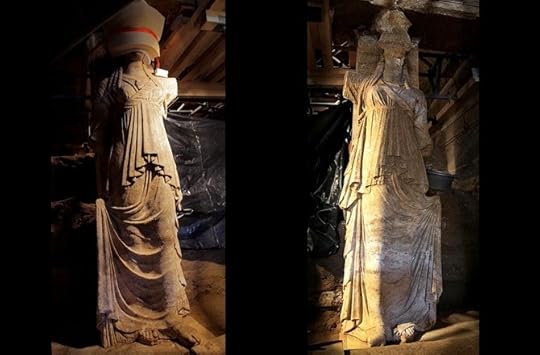 by Rossella Lorenzi
by Rossella Lorenzi The two Caryatids are fully revealed.
Greek Ministry of Culture

 GalleryFemaleSculpturesRevealedinGreekTomb:PhotosView Caption +#1: The two Caryatids are fully revealed. Greek Ministry of Culture
GalleryFemaleSculpturesRevealedinGreekTomb:PhotosView Caption +#1: The two Caryatids are fully revealed. Greek Ministry of Culture View Caption +#2: The statues wear high-soled red-and-yellow shoes. Greek Ministry of Culture
View Caption +#2: The statues wear high-soled red-and-yellow shoes. Greek Ministry of Culture View Caption +#3: Their toes are finely carved, as the rest of their bodies. Greek Ministry of Culture
View Caption +#3: Their toes are finely carved, as the rest of their bodies. Greek Ministry of Culture View Caption + This drawing shows the tomb reconstruction according to the ongoing excavation.
View Caption + This drawing shows the tomb reconstruction according to the ongoing excavation.Greek Ministry of Culture
 View Caption + Two finely carved female figures called Caryatids have been unearthed inside the mysterious tomb-in Amphipolis, which dates from the time of Alexander the Great. BLOG: Female Sculptures Guard Mysterious Tomb in Greece
View Caption + Two finely carved female figures called Caryatids have been unearthed inside the mysterious tomb-in Amphipolis, which dates from the time of Alexander the Great. BLOG: Female Sculptures Guard Mysterious Tomb in Greece Greek Ministry of Culture
 View Caption + Wearing a sleeved tunic and earrings, the Caryatids feature long, thick hair covering their shoulders. BLOG: Mosaics Revealed at Alexander the Great-Era Tomb
View Caption + Wearing a sleeved tunic and earrings, the Caryatids feature long, thick hair covering their shoulders. BLOG: Mosaics Revealed at Alexander the Great-Era Tomb Greek Ministry of Culture
 View Caption + While the face of one sculpture survives nearly intact, the other is missing. PHOTOS: Accidental Archaeological Discoveries
View Caption + While the face of one sculpture survives nearly intact, the other is missing. PHOTOS: Accidental Archaeological Discoveries Greek Ministry of Culture
 View Caption + The right arm of one Caryatid and the left arm of the other are both outstretched, as if to symbolically prevent anyone from attempting to enter the grave. BLOG: ‘Alexander the Sexy’ Seen in New Portrait
View Caption + The right arm of one Caryatid and the left arm of the other are both outstretched, as if to symbolically prevent anyone from attempting to enter the grave. BLOG: ‘Alexander the Sexy’ Seen in New PortraitGreek Ministry of Culture
 View Caption + A perfectly preserved rectangular marble block, measuring 14 feet long and 3 feet wide, was unearthed at the bottom of the barrel vault. BLOG: Sphinxes Emerge From Huge Ancient Greek Tomb
View Caption + A perfectly preserved rectangular marble block, measuring 14 feet long and 3 feet wide, was unearthed at the bottom of the barrel vault. BLOG: Sphinxes Emerge From Huge Ancient Greek TombGreek Ministry of Culture
 View Caption + On the underside of the large marble block are traces of blue, red and yellow, representing panels with rosettes in the center. Other rosettes were previously found embossed on a marble beam. VIDEO: Ancient Lost Army Found?
View Caption + On the underside of the large marble block are traces of blue, red and yellow, representing panels with rosettes in the center. Other rosettes were previously found embossed on a marble beam. VIDEO: Ancient Lost Army Found?Greek Ministry of Culture ext The two female statues guarding the massive burial complex in Amphipolis, in Greece's northeastern Macedonia region, can now be seen in all their glory from head to toe.
Pictures released by Greece's Culture Ministry on Sunday show the 7.45-foot-tall statues standing on a marble pedestal with high-soled red and yellow shoes.
"Their toes have been sculpted in great detail," the Greek ministry of culture said.
3rd Room of Ancient Greek Tomb Revealed
Carved in high relief of Thassos marble, the imposing twin statues, known as Caryatids, stand between two marble pillars supporting a beam. They were "buried" in the ground, sandwiched between two walls, one sealing the statues off and the other closing another chamber.
Wearing a long chiton -- a sleeveless garment from the Archaic period -- and earrings, the statues feature long, thick hair covering their shoulders. While the face of one Caryatid survives almost intact, the other is missing, but archaeologists have found some fragments of the face, as well as some pieces of their missing hands.
The sculptures appear to slightly lift their chitons with the corresponding hand. As for the figures's alternated raised arms, the archaeologists have interpreted them as a sign to symbolically prevent anyone attempting to enter the grave.
Mosaics Revealed at Alexander the Great-Era Tomb
The distance between the two pedestals on which the Caryatids stand is 5.5ft, which is the same as the door opening at the tomb's entrance. This is guarded by two headless, wingless sphinxes.
The excavation has so far uncovered three chambers in the tomb. Earlier today, the secretary of the Ministry of Culture Lina Mendoni said there might be a fourth chamber in the mysterious burial.
news.discovery

Published on September 22, 2014 12:07
Book Launch - Scribbler Tales - a collection of short stories by Mary Ann Bernal now available on Kindle

“Scribbler Tales is a unique mix of genres in one anthology rich with tension, humanity and genuine emotion. Unconventional settings and unexpected twists are bound to leave you pondering long after you close this book.”
In Desperate Measures, Audrey learns of Paul’s duplicity when human cloning experiments go awry. Forbidden Lorebeckons Arianna and Ethan into a haunted cemetery where they are confronted by a gathering of witches with evil intent . Adrian must challenge his father to marry Rina or suffer the fate of star-crossed lovers in Forever Lost. In The Hourglass, Flair makes a covenant with the Devil to keep Brice alive. Aaron reflects upon his childhood as a military brat in Sail with Me.
Amazon Link

Published on September 22, 2014 04:38
History Trivia - Emperor Nero creates the Legion I Italica.
Sept 22
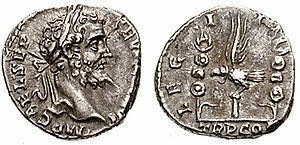
66 Emperor Nero created the Legion I Italica.

1499 Switzerland became an independent state.
1515 A nne of Cleves was born. The fourth wife of Henry VIII, Anne was able to obtain a divorce and maintained a friendly relationship with the Tudor family.
nne of Cleves was born. The fourth wife of Henry VIII, Anne was able to obtain a divorce and maintained a friendly relationship with the Tudor family.
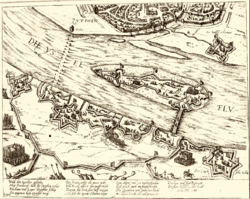
1586 Battle of Zutphen was a confrontation of the Eighty Years' War fought between forces of the United Provinces of the Netherlands, aided by the English, against the Spanish, who sought to regain the northern Netherlands. Elizabeth I sent troops under the earl of Leicester to aid the rebels, however the Spanish were victorious.


66 Emperor Nero created the Legion I Italica.

1499 Switzerland became an independent state.
1515 A
 nne of Cleves was born. The fourth wife of Henry VIII, Anne was able to obtain a divorce and maintained a friendly relationship with the Tudor family.
nne of Cleves was born. The fourth wife of Henry VIII, Anne was able to obtain a divorce and maintained a friendly relationship with the Tudor family. 
1586 Battle of Zutphen was a confrontation of the Eighty Years' War fought between forces of the United Provinces of the Netherlands, aided by the English, against the Spanish, who sought to regain the northern Netherlands. Elizabeth I sent troops under the earl of Leicester to aid the rebels, however the Spanish were victorious.

Published on September 22, 2014 04:37
September 21, 2014
Mr. Chuckles catches up with "Mistress of Moonlight" herself, Lelani Black around the Wizard's Cauldron!
 The Wizard says:
The Wizard says:Erotic romance with the "Mistress of Moonlight" herself, Lelani Black...around the Cauldron!
Lelani Black, extremely popular Colorado-based erotic romancier has just released her new novel. I'm a massive fan of Lelani - as are a growing number of e-book readers around the world - and she is a terrific friend of the Cauldron.
Lelani's first interview with Wiz
Picking up the Wizphone, I caught up with her in her smallholding as she struggled to catch and restrain her flying chickens. Yes, chickens DO fly, Lelani assures me. I'll believe it when I see it ha ha. Here's what Lelani had to say

Published on September 21, 2014 05:25
History Trivia - Richard I the Lion hearted captured by Leopold V, Duke of Austria
Sept 21
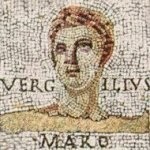
19 BC Virgil, the great Roman poet, died in Rome at age 50.
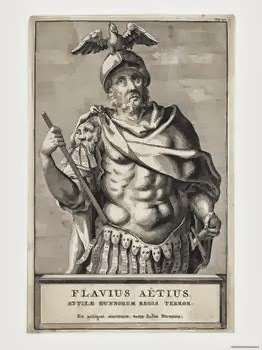
454 AD Falvius Actius, Roman general and statesman was born.
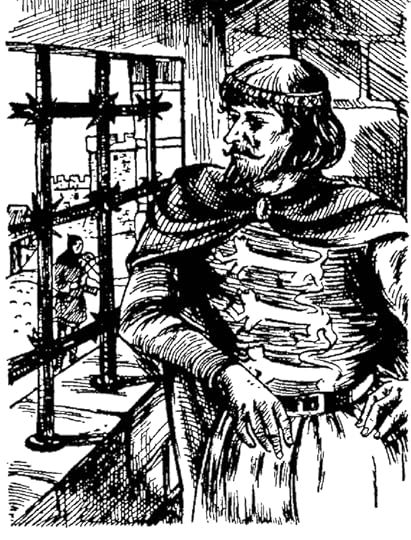
1192 Richard I the Lion hearted was captured near Vienna by Leopold V, Duke of Austria who accused Richard of arranging the murder of his cousin Conrad of Montferrat.
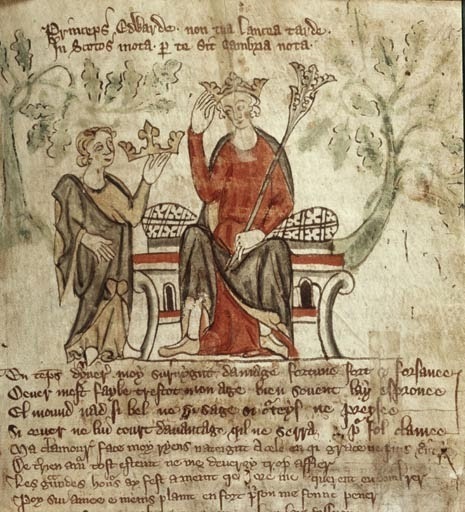
1327 Edward II of England was murdered by order of his wife Isabella, daughter of King Philip IV of France.


19 BC Virgil, the great Roman poet, died in Rome at age 50.

454 AD Falvius Actius, Roman general and statesman was born.

1192 Richard I the Lion hearted was captured near Vienna by Leopold V, Duke of Austria who accused Richard of arranging the murder of his cousin Conrad of Montferrat.

1327 Edward II of England was murdered by order of his wife Isabella, daughter of King Philip IV of France.

Published on September 21, 2014 05:13
September 20, 2014
Long-Lost Roman Fort Discovered in Germany
By Stephanie Pappas
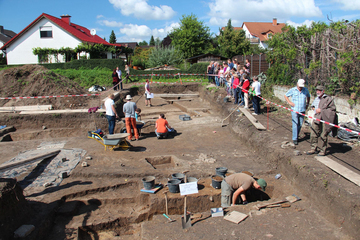 The public watches as students dig for artifacts within the remains of a 1,900-year-old Roman fort that once quartered 500 troops in what is today Gernsheim in Germany.
The public watches as students dig for artifacts within the remains of a 1,900-year-old Roman fort that once quartered 500 troops in what is today Gernsheim in Germany.
Credit: Frankfurt University
Archaeologists have discovered the remains of a 1,900-year-old Roman fort that once quartered 500 troops in what is today Germany.
The fort was found in the town of Gernsheim, which sits along the Rhine River in the German state of Hesse. Researchers knew the area was the site of a village during the first to third centuries, but otherwise, the region's history during the Roman occupation is largely unknown, dig leader Thomas Maurer, an archaeologist at the University of Frankfurt, said in a statement.
"It was assumed that this settlement had to have been based on a fort, since it was customary for the families of the soldiers to live outside the fort in a village-like settlement," Maurer said. Until now, however, no one had found that fort. [Roman Fort: See Images of the Long-Lost Discoveries]
Military rediscovery During an educational dig in the area, Maurer and his colleagues uncovered postholes that once held the foundations of a wooden tower, as well as two V-shaped ditches, which were a common feature of Roman forts of the era. A unit of 500 soldiers, known as a "cohort," was stationed at the fort between about A.D. 70 and A.D.120.
Fortunately for modern-day archaeologists, the last Romans to leave the fort destroyed the place on the way out, filling in the ditches with rubbish. This rubbish included "box after box" of ceramic shards, which can be dated to pinpoint the time of the abandonment of the fort, said Hans-Markus von Kaenel, a professor at the Goethe University Institute of Archaeology.
"We really hit the jackpot with this excavation campaign," von Kaenel said in the statement.
Roman history
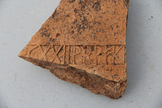 [image error]
[image error]
 A brick fragment stamped with the sign of the 22nd Roman Legion, an elite unite from the late first century.
A brick fragment stamped with the sign of the 22nd Roman Legion, an elite unite from the late first century.
Credit: Frankfurt UniversityView full size imageResearchers have been able to piece together a broad history of the Gernsheim region from a scattering of archaeological finds there. The Romans built the newly discovered fort around A.D. 70 as a jumping-off point for control of areas east of the Rhine, according to von Kaenel and his colleagues. The area was an important transportation hub, with roads branching off to access the borders of the Roman Empire. There may have also been a harbor on the Rhine at the time, though that has yet to be verified, Maurer said.
The modern expansion of the town paved over many suspected Roman sites, but Maurer, von Kaenel and their colleagues managed to secure permission for a dig on a vacant double lot near where Roman-era finds were discovered in the 1970s and 1980s. This lot turned out to hold the remains of the long-lost fort.
A brick fragment found at the site identifies the troops quartered at the fort as members of the 22nd Legion, an elite unit from the late first century. Researchers also found a large horse harness pendant used by Roman cavalry.
livescience

 The public watches as students dig for artifacts within the remains of a 1,900-year-old Roman fort that once quartered 500 troops in what is today Gernsheim in Germany.
The public watches as students dig for artifacts within the remains of a 1,900-year-old Roman fort that once quartered 500 troops in what is today Gernsheim in Germany.Credit: Frankfurt University
Archaeologists have discovered the remains of a 1,900-year-old Roman fort that once quartered 500 troops in what is today Germany.
The fort was found in the town of Gernsheim, which sits along the Rhine River in the German state of Hesse. Researchers knew the area was the site of a village during the first to third centuries, but otherwise, the region's history during the Roman occupation is largely unknown, dig leader Thomas Maurer, an archaeologist at the University of Frankfurt, said in a statement.
"It was assumed that this settlement had to have been based on a fort, since it was customary for the families of the soldiers to live outside the fort in a village-like settlement," Maurer said. Until now, however, no one had found that fort. [Roman Fort: See Images of the Long-Lost Discoveries]
Military rediscovery During an educational dig in the area, Maurer and his colleagues uncovered postholes that once held the foundations of a wooden tower, as well as two V-shaped ditches, which were a common feature of Roman forts of the era. A unit of 500 soldiers, known as a "cohort," was stationed at the fort between about A.D. 70 and A.D.120.
Fortunately for modern-day archaeologists, the last Romans to leave the fort destroyed the place on the way out, filling in the ditches with rubbish. This rubbish included "box after box" of ceramic shards, which can be dated to pinpoint the time of the abandonment of the fort, said Hans-Markus von Kaenel, a professor at the Goethe University Institute of Archaeology.
"We really hit the jackpot with this excavation campaign," von Kaenel said in the statement.
Roman history
 [image error]
[image error]
 A brick fragment stamped with the sign of the 22nd Roman Legion, an elite unite from the late first century.
A brick fragment stamped with the sign of the 22nd Roman Legion, an elite unite from the late first century.Credit: Frankfurt UniversityView full size imageResearchers have been able to piece together a broad history of the Gernsheim region from a scattering of archaeological finds there. The Romans built the newly discovered fort around A.D. 70 as a jumping-off point for control of areas east of the Rhine, according to von Kaenel and his colleagues. The area was an important transportation hub, with roads branching off to access the borders of the Roman Empire. There may have also been a harbor on the Rhine at the time, though that has yet to be verified, Maurer said.
The modern expansion of the town paved over many suspected Roman sites, but Maurer, von Kaenel and their colleagues managed to secure permission for a dig on a vacant double lot near where Roman-era finds were discovered in the 1970s and 1980s. This lot turned out to hold the remains of the long-lost fort.
A brick fragment found at the site identifies the troops quartered at the fort as members of the 22nd Legion, an elite unit from the late first century. Researchers also found a large horse harness pendant used by Roman cavalry.
livescience

Published on September 20, 2014 16:00
Gas chambers unearthed at demolished Nazi concentration camp
Archaeologists uncover previously hidden ruins at Sobibor death camp in Poland, which was razed after a 1943 uprising
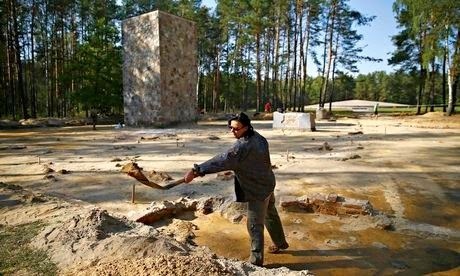 Archeologist Anna Zalewska works among the brick walls thought to be the ruins of gas chambers at the Sobibor camp. Photograph: Kacper Pempel/ReutersArchaeologists working at the site of the Nazi concentration camp at Sobibor, in eastern Poland, say they have uncovered previously hidden gas chambers in which an estimated quarter of a million Jews were killed.
Archeologist Anna Zalewska works among the brick walls thought to be the ruins of gas chambers at the Sobibor camp. Photograph: Kacper Pempel/ReutersArchaeologists working at the site of the Nazi concentration camp at Sobibor, in eastern Poland, say they have uncovered previously hidden gas chambers in which an estimated quarter of a million Jews were killed.
German forces tried to erase all traces of the camp when they closed it down after an uprising there on 14 October 1943. The Nazis demolished the gas chambers and an asphalt road was later built over the top.
Archaeologists excavated beneath the road and found lines of bricks, laid four deep, where they believe the walls of the gas chambers used to stand.
They have been able to establish how big the chambers were, information they said would help build up a more precise picture of how many people were murdered at the camp.
"Finally, we have reached our goal – the discovery of the gas chambers. We were amazed at the size of the building and the well-preserved condition of the chamber walls," said Yoram Haimi, one of the archaeologists.
Haimi said two of his own uncles, who had been living in Paris during the war and were rounded up by the Germans, were among those killed at Sobibor.
The archaeologists said that among the personal items they had found buried near the gas chambers was a wedding ring which carried the inscription, in Hebrew: "Behold, you are consecrated unto me."
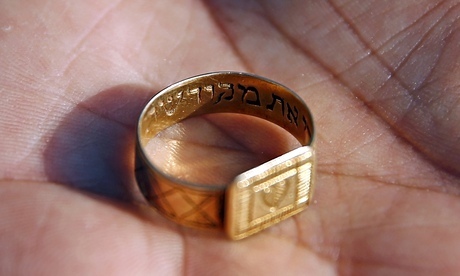 A golden ring inscribed in Hebrew which was unearthed by archaeologists at Sobibor. Photograph: Kacper Pempel/Reuters Historians say that because the Germans razed the camp, and because so few of those detained there came out alive to give testimony, there is less information about how Sobibor operated and the scale of the killing than there is for some other concentration camps.
A golden ring inscribed in Hebrew which was unearthed by archaeologists at Sobibor. Photograph: Kacper Pempel/Reuters Historians say that because the Germans razed the camp, and because so few of those detained there came out alive to give testimony, there is less information about how Sobibor operated and the scale of the killing than there is for some other concentration camps.
The Polish archaeologist Wojciech Mazurek, who has also been involved in uncovering the site, said the excavations revealed there were eight gas chambers.
"The extermination of people took place there; murder by smoke from an engine that killed everyone within 15 minutes in these gas chambers, in torment, shouting," he told Reuters Television.
"It is said that … the Nazis even bred geese in order to drown out these shouts so that prisoners could not have heard these shouts, these torments."
According to Israel's Yad Vashem International Institute for Holocaust Research, the 1943 uprising was organised by Jewish civilians at the camp and Jewish officers in the Soviet army who had been taken prisoner and sent to Sobibor.
About 300 people escaped, but most were caught and killed. Those who did not take part in the breakout were also killed. At the end of the second world war, about 50 escapees were left alive.
The research project at Sobibor is being carried out in coordination with the Yad Vashem institute, the German-Polish Foundation, and the Majdanek State Museum, near the Polish city of Lublin.
theguardian
 Archeologist Anna Zalewska works among the brick walls thought to be the ruins of gas chambers at the Sobibor camp. Photograph: Kacper Pempel/ReutersArchaeologists working at the site of the Nazi concentration camp at Sobibor, in eastern Poland, say they have uncovered previously hidden gas chambers in which an estimated quarter of a million Jews were killed.
Archeologist Anna Zalewska works among the brick walls thought to be the ruins of gas chambers at the Sobibor camp. Photograph: Kacper Pempel/ReutersArchaeologists working at the site of the Nazi concentration camp at Sobibor, in eastern Poland, say they have uncovered previously hidden gas chambers in which an estimated quarter of a million Jews were killed.German forces tried to erase all traces of the camp when they closed it down after an uprising there on 14 October 1943. The Nazis demolished the gas chambers and an asphalt road was later built over the top.
Archaeologists excavated beneath the road and found lines of bricks, laid four deep, where they believe the walls of the gas chambers used to stand.
They have been able to establish how big the chambers were, information they said would help build up a more precise picture of how many people were murdered at the camp.
"Finally, we have reached our goal – the discovery of the gas chambers. We were amazed at the size of the building and the well-preserved condition of the chamber walls," said Yoram Haimi, one of the archaeologists.
Haimi said two of his own uncles, who had been living in Paris during the war and were rounded up by the Germans, were among those killed at Sobibor.
The archaeologists said that among the personal items they had found buried near the gas chambers was a wedding ring which carried the inscription, in Hebrew: "Behold, you are consecrated unto me."
 A golden ring inscribed in Hebrew which was unearthed by archaeologists at Sobibor. Photograph: Kacper Pempel/Reuters Historians say that because the Germans razed the camp, and because so few of those detained there came out alive to give testimony, there is less information about how Sobibor operated and the scale of the killing than there is for some other concentration camps.
A golden ring inscribed in Hebrew which was unearthed by archaeologists at Sobibor. Photograph: Kacper Pempel/Reuters Historians say that because the Germans razed the camp, and because so few of those detained there came out alive to give testimony, there is less information about how Sobibor operated and the scale of the killing than there is for some other concentration camps.The Polish archaeologist Wojciech Mazurek, who has also been involved in uncovering the site, said the excavations revealed there were eight gas chambers.
"The extermination of people took place there; murder by smoke from an engine that killed everyone within 15 minutes in these gas chambers, in torment, shouting," he told Reuters Television.
"It is said that … the Nazis even bred geese in order to drown out these shouts so that prisoners could not have heard these shouts, these torments."
According to Israel's Yad Vashem International Institute for Holocaust Research, the 1943 uprising was organised by Jewish civilians at the camp and Jewish officers in the Soviet army who had been taken prisoner and sent to Sobibor.
About 300 people escaped, but most were caught and killed. Those who did not take part in the breakout were also killed. At the end of the second world war, about 50 escapees were left alive.
The research project at Sobibor is being carried out in coordination with the Yad Vashem institute, the German-Polish Foundation, and the Majdanek State Museum, near the Polish city of Lublin.
theguardian

Published on September 20, 2014 15:54
Ancient Egyptian Woman with 70 Hair Extensions Discovered
By Owen Jarus
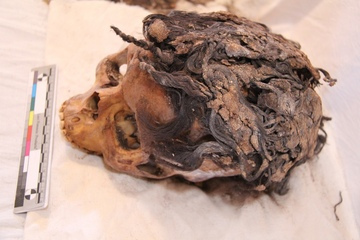 The remains of a 3,300-year-old woman who wore a complex hairstyle with 70 hair extensions was discovered in the ancient city of Armana.
The remains of a 3,300-year-old woman who wore a complex hairstyle with 70 hair extensions was discovered in the ancient city of Armana.
Credit: Photo by Jolanda Bos and Lonneke Beukenholdt
More than 3,300 years ago, in a newly built city in Egypt, a woman with an incredibly elaborate hairstyle of lengthy hair extensions was laid to rest.
She was not mummified, her body simply being wrapped in a mat. When archaeologists uncovered her remains they found she wore "a very complex coiffure with approximately 70 extensions fastened in different layers and heights on the head," writes Jolanda Bos, an archaeologist working on the Amarna Project, in an article recently published in the Journal of Egyptian Archaeology.
Researchers don't know her name, age or occupation, but she is one of hundreds of people, including many others whose hairstyles are still intact, who were buried in a cemetery near an ancient city now called Amarna. [See Photos of the Egyptian Skeletons and Elaborate Hairstyles]
This city was constructed as a new capital of Egypt by Akhenaten (reign ca. 1353-1335 B.C.), a pharaoh who unleashed a religious revolution that saw the Aten, a deity shaped as a sun disk, assume supremacy in Egyptian religion. Akhenaten ordered that Amarna be constructed in the desert and that images of some of Egypt's other gods be destroyed. Amarna was abandoned shortly after Akhenaten's death, and today archaeologists supported by the Amarna Trust are investigating all aspects of the ancient city, including the hairstyles its people wore.
Bos is leading the hairstyle research, and the woman with 70 extensions leaves her puzzled.
"Whether or not the woman had her hair styled like this for her burial only is one of our main research questions," said Bos in an email to Live Science. "The hair was most likely styled after death, before a person was buried. It is also likely, however, that these hairstyles were used in everyday life as well and that the people in Amarna used hair extensions in their daily life."
Many of the other skulls Bos analyzed also had hair extensions. One skull had extensions made of gray and dark black hair suggesting multiple people donated their hair to create extensions.
Hairy discoveries
As Bos analyzed a selection of 100 recently excavated skulls (of which 28 still had hair) from the Armana cemetery, she noticed the people who lived in the ancient city had a wide variety of hair types. They range "from very curly black hair, to middle brown straight," she noted in the journal article, something "that might reflect a degree of ethnic variation." [Photos: 10 Iconic Hairstyles That Took Root]
Those skulls with brown hair often had rings or coils around their ears, a style that was popular at Amarna, she found. Why people in this city liked it is unknown. "We still have no idea. This is of course one of the answers we are still trying to find from the record," said Bos in the email.
People in the city also seemed to be fond of braids. "All braids found in the coiffures were simple and of three strands, mostly 1 cm [0.4 inches] wide, with strands of approximately 0.5 cm [0.2 inches] when tightly braided," Bos writes in the journal article.
People at Amarna also liked to keep their hair short. "Braids were often not more than 20 cm [7.9 inches] long, leaving the hair at shoulder length approximately," Bos added. "The longest hair that was found consisted of multilayered extensions to a length of approximately 30 cm [11.8 inches]."
Fat was used to help create all the hairstyles Bos found, something that would have helped keep the hair in one piece after death. More research is needed to determine whether the fat was from animals. A textile found on each of the skulls may have been used to cover part of the head.
Hide the gray?
In one case a woman has an orange-red color on her graying hair. It appears that that she dyed her hair, possibly with henna (a flowering plant).
"We are still not completely sure if and what kind of hair coloring was used on this hair, it only seems that way macroscopically," said Bos in the email. "At present we are analyzing the hairs in order to find out whether or not some kind of coloring was used. On other sites dyed hair was found from ancient Egypt."
This woman, among other ancient Egyptians, may have dyed her hair "for the same reason as why people dye their hair today, in order not to show the gray color," Bos said.
livescience
 The remains of a 3,300-year-old woman who wore a complex hairstyle with 70 hair extensions was discovered in the ancient city of Armana.
The remains of a 3,300-year-old woman who wore a complex hairstyle with 70 hair extensions was discovered in the ancient city of Armana.Credit: Photo by Jolanda Bos and Lonneke Beukenholdt
More than 3,300 years ago, in a newly built city in Egypt, a woman with an incredibly elaborate hairstyle of lengthy hair extensions was laid to rest.
She was not mummified, her body simply being wrapped in a mat. When archaeologists uncovered her remains they found she wore "a very complex coiffure with approximately 70 extensions fastened in different layers and heights on the head," writes Jolanda Bos, an archaeologist working on the Amarna Project, in an article recently published in the Journal of Egyptian Archaeology.
Researchers don't know her name, age or occupation, but she is one of hundreds of people, including many others whose hairstyles are still intact, who were buried in a cemetery near an ancient city now called Amarna. [See Photos of the Egyptian Skeletons and Elaborate Hairstyles]
This city was constructed as a new capital of Egypt by Akhenaten (reign ca. 1353-1335 B.C.), a pharaoh who unleashed a religious revolution that saw the Aten, a deity shaped as a sun disk, assume supremacy in Egyptian religion. Akhenaten ordered that Amarna be constructed in the desert and that images of some of Egypt's other gods be destroyed. Amarna was abandoned shortly after Akhenaten's death, and today archaeologists supported by the Amarna Trust are investigating all aspects of the ancient city, including the hairstyles its people wore.
Bos is leading the hairstyle research, and the woman with 70 extensions leaves her puzzled.
"Whether or not the woman had her hair styled like this for her burial only is one of our main research questions," said Bos in an email to Live Science. "The hair was most likely styled after death, before a person was buried. It is also likely, however, that these hairstyles were used in everyday life as well and that the people in Amarna used hair extensions in their daily life."
Many of the other skulls Bos analyzed also had hair extensions. One skull had extensions made of gray and dark black hair suggesting multiple people donated their hair to create extensions.
Hairy discoveries
As Bos analyzed a selection of 100 recently excavated skulls (of which 28 still had hair) from the Armana cemetery, she noticed the people who lived in the ancient city had a wide variety of hair types. They range "from very curly black hair, to middle brown straight," she noted in the journal article, something "that might reflect a degree of ethnic variation." [Photos: 10 Iconic Hairstyles That Took Root]
Those skulls with brown hair often had rings or coils around their ears, a style that was popular at Amarna, she found. Why people in this city liked it is unknown. "We still have no idea. This is of course one of the answers we are still trying to find from the record," said Bos in the email.
People in the city also seemed to be fond of braids. "All braids found in the coiffures were simple and of three strands, mostly 1 cm [0.4 inches] wide, with strands of approximately 0.5 cm [0.2 inches] when tightly braided," Bos writes in the journal article.
People at Amarna also liked to keep their hair short. "Braids were often not more than 20 cm [7.9 inches] long, leaving the hair at shoulder length approximately," Bos added. "The longest hair that was found consisted of multilayered extensions to a length of approximately 30 cm [11.8 inches]."
Fat was used to help create all the hairstyles Bos found, something that would have helped keep the hair in one piece after death. More research is needed to determine whether the fat was from animals. A textile found on each of the skulls may have been used to cover part of the head.
Hide the gray?
In one case a woman has an orange-red color on her graying hair. It appears that that she dyed her hair, possibly with henna (a flowering plant).
"We are still not completely sure if and what kind of hair coloring was used on this hair, it only seems that way macroscopically," said Bos in the email. "At present we are analyzing the hairs in order to find out whether or not some kind of coloring was used. On other sites dyed hair was found from ancient Egypt."
This woman, among other ancient Egyptians, may have dyed her hair "for the same reason as why people dye their hair today, in order not to show the gray color," Bos said.
livescience

Published on September 20, 2014 15:48



